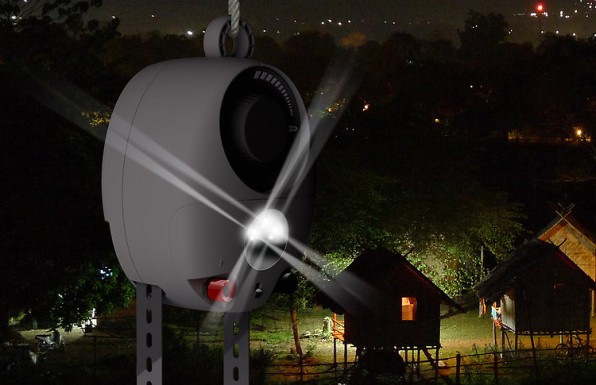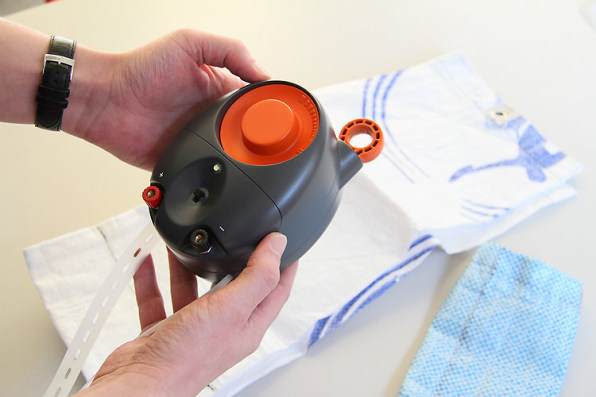Sterling Silver Crystal Ball Pendant Necklace
The crowdfunding movement has one overarching objective: to democratize access to capital. It uses technology to eliminate the inescapable bottlenecks and inefficiencies of the capital market.
It used to be that if you wanted capital, you had to work through formal capital aggregators, which meant that if you were lower on their priority list, you didn't get funding. Crowdfunding platforms–like Indiegogo, where I work–have eliminated the gatekeeper, and now "the people" have the power to decide which ideas come to life.
But crowdfunding doesn't simply fuel the exchange of capital; it also acts as a crystal ball for society. Funding gravitates toward innovations that have the most potential to address pressing social issues. Crowdfunding doesn't just mitigate funding risk, it also reduces two other big risks that social entrepreneurs face: marketing and execution. Consider, for example, two entrepreneurs who crowdfunded their way to helping poor communities gain access to safer, cheaper lighting: the story of Martin Riddiford and Jim Reeves of GravityLight.

Shedding Light
In 2012, product engineers Riddiford and Reeves took up nonprofit SolarAid's challenge to create a low-cost LED lantern that could replace the kerosene lamps frequently used as light sources in some of the neediest communities around the world. In many places, up to 20 percent of a family's monthly income goes toward the purchase of kerosene; that's money that can't be spent on food, housing, or education. What's more, kerosene can be dangerous: Lamps overturn and start fires, and–even without a major accident–smoke inhalation has major health consequences. They envisioned a better solution for light production, one that was affordable and safe.
They developed a product called the GravityLight, a weight-bearing illuminator that hangs from the ceiling and generates energy as the weight is pulled by gravity. Three seconds of lifting the weight up generates 25 minutes of light.
Reducing Funding Risk
When the inventors shared their idea with traditional financiers, they were met with a lot of skepticism. "Is there a true market for this?" "Will people really lift a weight?" "Even though kerosene costs $3.50 a month, can people afford the $10 upfront cost to purchase a GravityLight?"
In order to raise enough money to launch and eventually scale, they realized the only way to answer these questions was to run a field trial to collect data. But a field trial would cost money too. They were stuck.
Locked out of traditional financing, the GravityLight team turned to crowdfunding to raise the $55,000 that would cover the costs of a field trial. Just four days into their campaign on Indiegogo, they hit their funding target: 6,219 people from 99 countries and territories had discovered, connected with, and funded Gravity Light. By the time the campaign closed 36 days later, GravityLight had raised $399,550 from individuals, international NGOs, governments, and even individuals living "off the grid."
Reducing market risk
"Market risk" is the second risk entrepreneurs face: the possibility of building something that no one, or not enough people, will want, making the time spent on the project a waste. GravityLight's funding not only covered the cost of the field trial, but it validated their product. The speed of funding, total amount raised, and diversity of funding sources showed without a doubt that there was indeed a market for this product. By the time the campaign ended, many of the originally skeptical financiers were calling the team, hoping that Riddiford and Reeves would take their money.

Reducing Execution Risk
"Execution risk" is the third big risk all entrepreneurs face. Even if you're solving a real problem, you might be doing it poorly–wrong product fit, wrong customer, or even wrong price. The GravityLight founders gave away a product sample to each funder, and that became a divining rod of sorts for the right customer segments. Indeed, by gradually raising a lot of money from a lot of people, rather than quickly raising a lot of money from just a few people, the founders of GravityLight discovered various uses for their product that they had never envisioned. For example, aid organizations that store emergency provisions (like lights) for long periods of time took notice of GravityLight's campaign, given that battery-powered lights don't survive well in storage. Similarly, people from developing countries–target customers themselves–funded the campaign too, and used their sample product as part of emergency preparedness initiatives for the next hurricane, earthquake, or other natural disaster that could leave them without power.
By offering the lights as campaign "perks" and being able to collect information about funders through the analytics and communication portals provided by the funding platform, Riddiford and Reeve confirmed who their customers were (and identified new ones), where they lived, and what they were willing to pay. All of this real market data was collected and studied before they built a market-ready GravityLight.
Indeed, in democratizing funding, crowdfunders also are democratizing social engagement–providing new opportunities for those in need to take an active role in creating solutions to the very problems they face.
Sterling Silver Crystal Ball Pendant Necklace
Source: https://www.fastcompany.com/3043848/the-innovators-new-crystal-ball-crowdfunding

0 Response to "Sterling Silver Crystal Ball Pendant Necklace"
Post a Comment